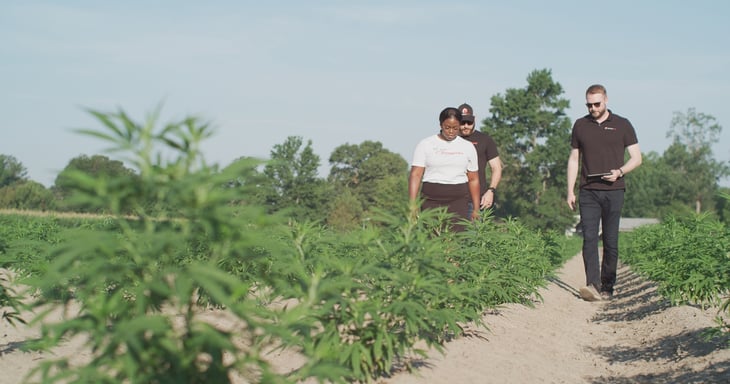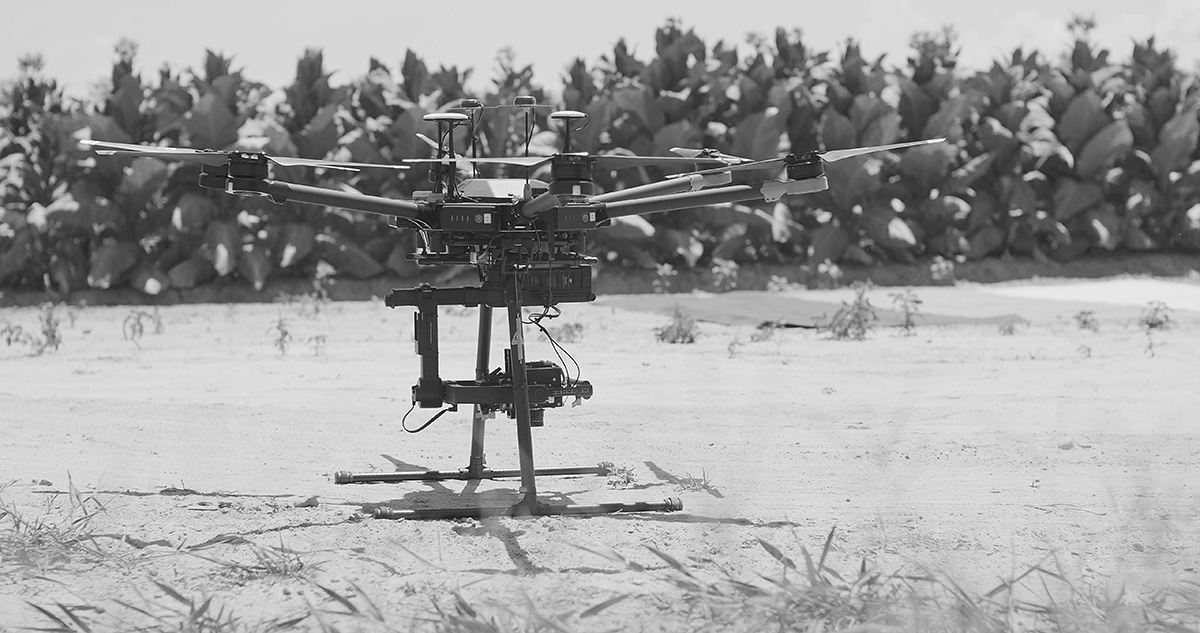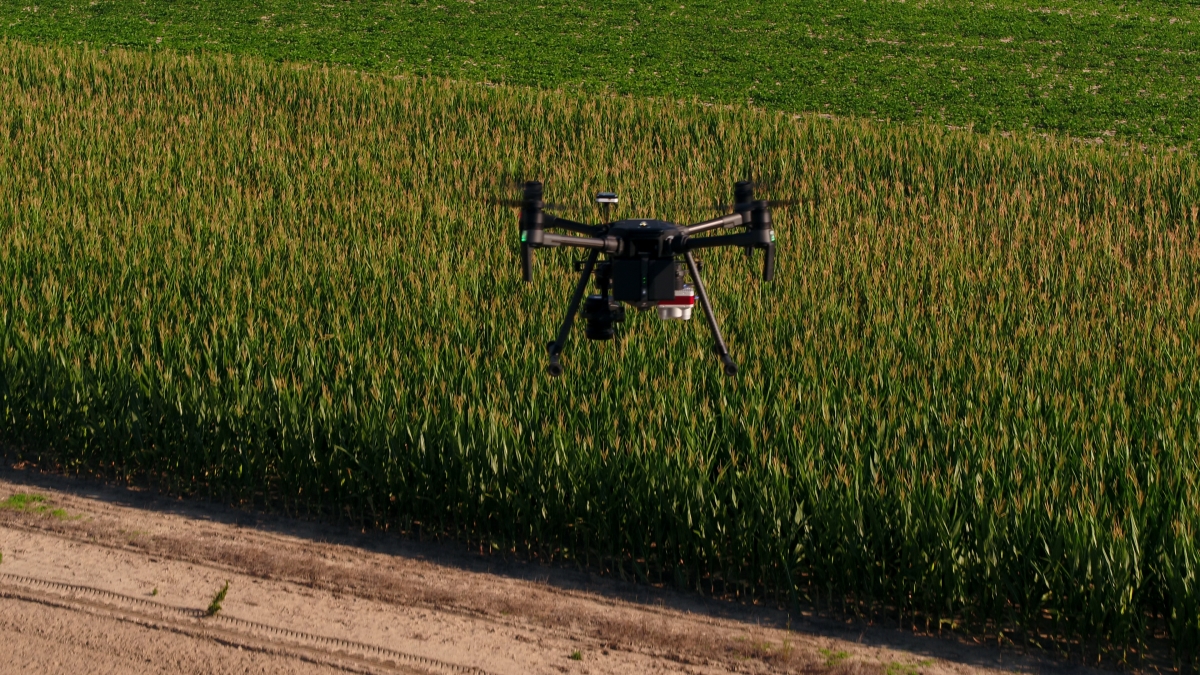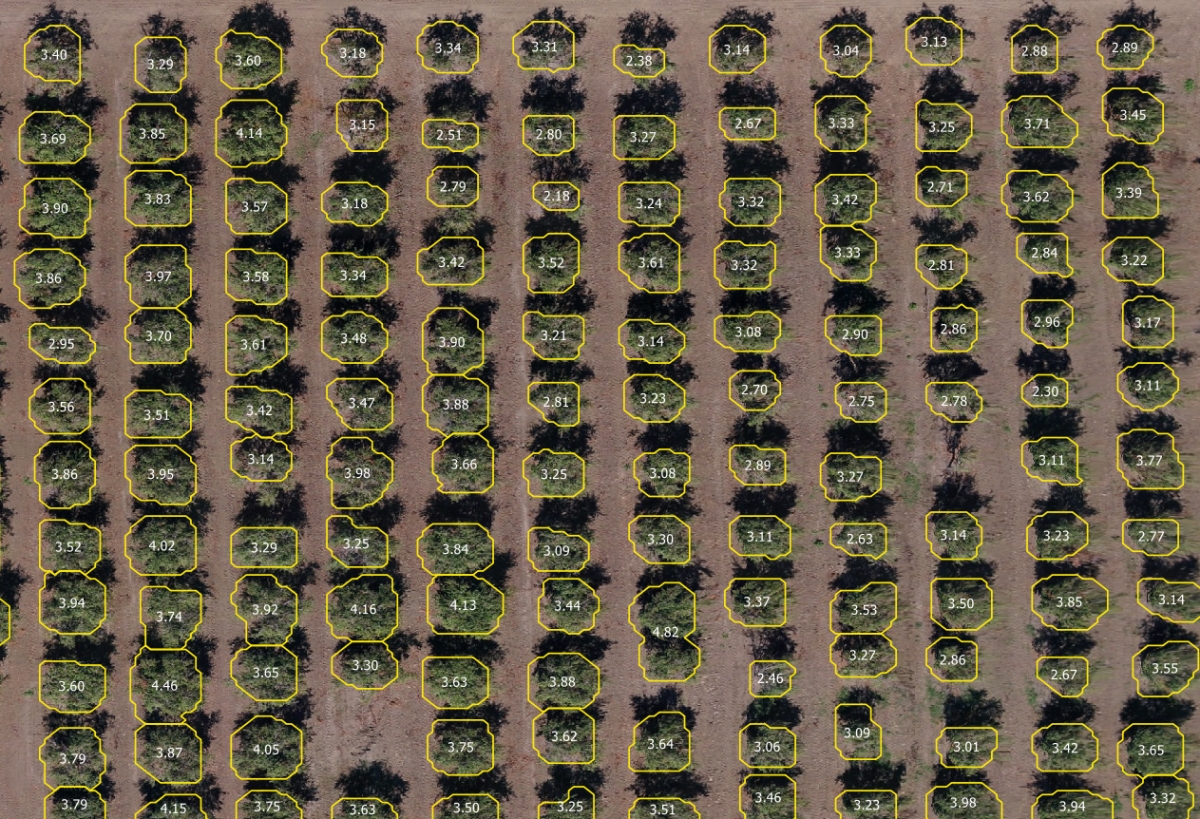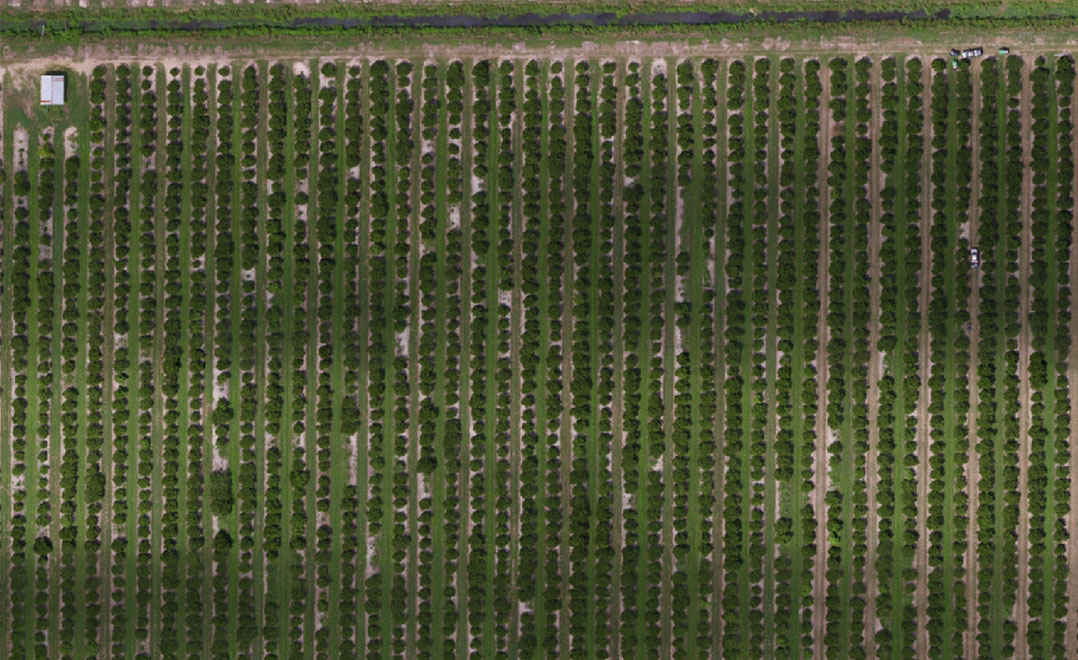Since the 2018 Farm Bill enabled the legal production of cannabis for hemp, farmers across the U.S. are looking to legally incorporate hemp plants among their crops, specifically for the use of CBD. Now, the CBD industry is expected to grow to $2 billion by 2022. But after 81 years of importing hemp-based products like CBD from other countries, many farmers are struggling to maximize profits as they figure out the optimal growing conditions for hemp plants. Drone-based data and analytics can help farmers better understand their crop as they navigate the uncertainty surrounding the hemp growing cycle.
In 2018, after decades of taxes and regulation aimed at limiting cannabis production in the U.S., the federal government signed into law a bill that enables the production of a type of cannabis plant used for hemp. Most growers expressing interest in producing hemp are focused on cannabidiol, or CBD, which is a product of hemp-based cannabinoids, popular for its use as a pharmaceutical or dietary supplement. Under federal regulations, hemp farmers cannot legally grow cannabis containing more than 0.3 percent of tetrahydrocannabinol (THC), the drug associated with the marijauna high. Specifically challenging to farmers is the question of how the environmental growing conditions across the U.S. affect THC levels at harvest. If a hemp plant is found to have more than 0.3 percent THC at harvest, it must be destroyed.
Moreover, determining the gender of the plant (female plants are better for products like CBD), managing inputs like irrigation and fertilizer, and getting accurate sizing and stand counts throughout the growth cycle are all challenges that may impact profits. Since hemp is a high-cost, high-profit plant costing about $10,000 per acre, or $4 per plant, even losing a handful of seeds can mean a significant loss of investment and opportunity.
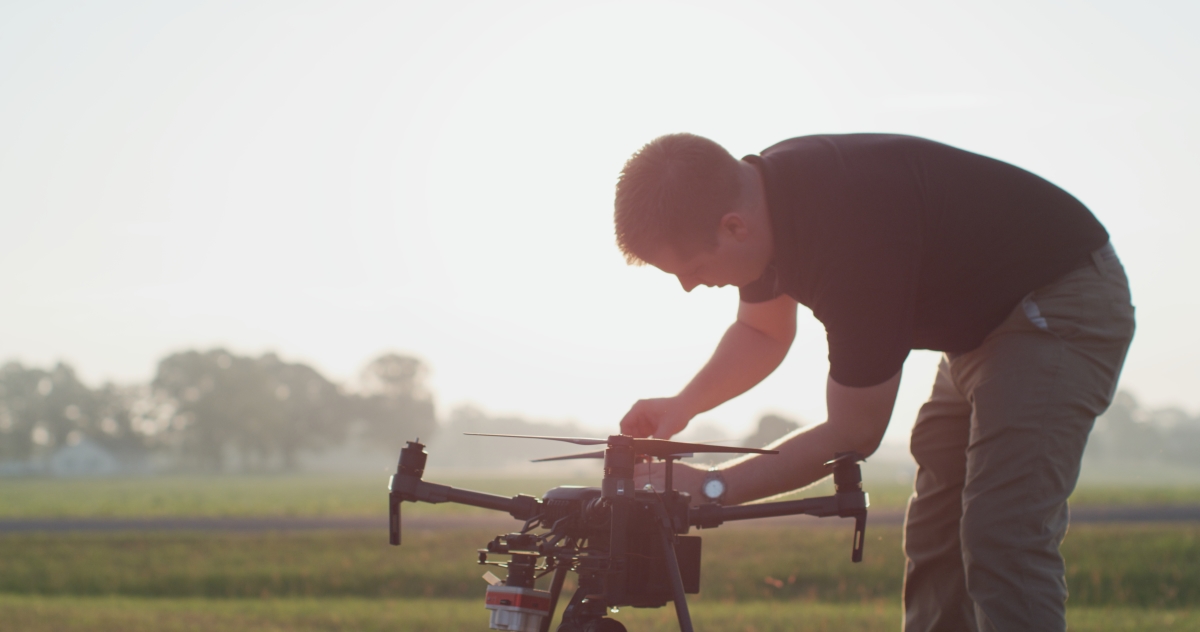
Regardless of whether or not a grower has implemented precision agriculture on their farm, there are many ways they can use drone-based aerial intelligence when managing hemp. By flying a drone over the field, farmers can scout hundreds of acres of hemp in a single day, reducing the need for time-and-labor intensive ground-based scouting. By capturing visual and multispectral data as they fly, they can get an accurate stand count shortly after plants emerge, and can analyze sizing early in the vegetative stage. With high-quality, multi-sensor imagery and analytics, they can track crop progression and flowering and make more informed decisions to manage nutrient inputs. Ultimately, farmers maximize their profitability by using this information in making more efficient and effective planting and input decisions.
Drone-based crop scouting and precision management are supplanting labor- and time-intensive traditional crop management practices on hemp farms for:
- Crop scouting: drones enable farmers to save time by flying overhead and scouting in minutes what would take a day or more for ground-based inspection.
- Counting: drone-based data can be used by farmers to quickly and precisely count plants in a field, replacing mathematical estimates based on sample sizes of an acre or row.
- Sizing: aerial imagery and analytics replace eye-ball estimates with precise and accurate measurements of plant size across a field or management zones (this can be indicative of yield and help identify areas of stress that need to be addressed).
- Managing inputs: monitor plant health, vigor, and look for early signs of plant stressors such as under- or over-watering, disease and pests using vegetative indices.
- Mapping the field: learn more about the topography and soil type of different zones in your field and better manage irrigation and fertilizer inputs.
Read on to learn how PrecisionHawk is one of the few precision agriculture companies helping hemp farmers make more-informed decisions and mitigate the risk of plant loss.
PrecisionAnalytics: An Ag Software Solution
Precision agriculture can improve the accuracy of stand counts and sizing, and deliver vegetative analyses that inform growers on the health of their plants, including potential indicators of plant stress. Ultimately, these automated analytics provide the information necessary to speed decisions on input management and whether to replant. Using drone-based data collection, farmers can evaluate stands within a week after the first plants emerge. Farmers can get an accurate count, analyze the difference in plant size across a zone or field, evaluate where plants are struggling to emerge and grow, and make the necessary management decisions to mitigate those stressors. Most importantly, farmers can maximize zonal efficiency by deciding whether to replant before it’s too late.
The key to making such decisions is implementing a simple, streamlined solution for collecting, processing, and analyzing data. One that gives farmers greater access to information about their farming assets and day-to-day operations. With the right analytics software, drones can be a powerful tool for deriving insights from information about crop health.
With our streamlined, drone-based solution, hemp and cannabis farmers can:
- Collect: fly a range of ready-to-fly drone and sensor hardware, including the cutting-edge MicaSense RedEdge or Altum sensors, to gather high-quality data
- Process & Analyze: use vegetative indices to quantify the number of hemp/cannabis plants, automate sizing and plant health analysis, streamline crop scouting and prescription map creation, and accelerate replant decisions
- Report: generate prescription maps and customized PDF reports on fertilizer application and export directly to a farm management system
Whether you’re looking to optimize profitability by making more efficient input decisions, select crops with the greatest market potential for that growing season, or track decisions and performance across multiple growing seasons, our data value chain serves as a starting point to guide you through the process of adopting and implementing drone-based aerial intelligence.
Collect High-Quality Hemp Crop Data
At PrecisionHawk, our goal is to help farmers accelerate and streamline the work of data collection, analysis and reporting. Farmers can optimize their data collection by gathering more imagery in fewer flights at a higher altitude. Hemp plants can be captured at altitudes 200 feet or higher, enabling users to cover more terrain in less time, while still getting highly accurate data.
For hemp counting and analysis, farmers can start with a multirotor drone, such as the DJI Phantom 4 Pro or DJI Mavic drones, outfitted with RGB sensors. Farmers or researchers seeking additional layers of information can use the DJI M200 drone equipped with a MicaSense RedEdge-MX or MicaSense Altum sensors to capture near-infrared, red-edge, or thermal imagery. MicaSense’s sensors are purpose-built for precision agriculture. By capturing very narrow spectral bands, between 10-40 nanometers wide, they’re able to detect subtle changes in plant reflectance throughout the hemp growing season. That means these sensors can help farmers detect even more nuanced information about nutritional inputs, stressors, and potential disease affecting their plants.
The entire process of data collection and analysis is cloud-based, enabling a smooth transition from capturing data in-field, to analyzing and actioning results. Using PrecisionAnalytics, farmers can upload information about different farms, create unlimited fields, and even import their GPS boundaries to geolocate areas of interest.
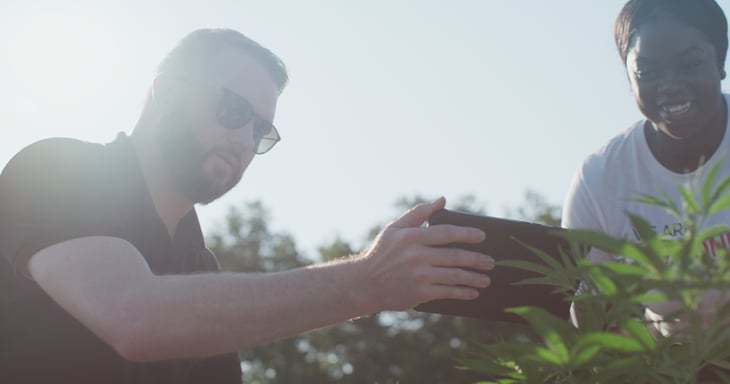
Process & Analyze
PrecisionAnalytics Agriculture is a complete aerial mapping, modeling, and agronomy platform based on 10 years of agriculture analytics experience and millions of acres of crop data. The system automatically processes, organizes, and annotates geospatial data. It also applies machine vision to automatically produce rich data visualizations, as well as machine learning to surface trends and patterns in crops.
In PrecisionAnalytics Agriculture, a farmer can monitor hemp health, verify stand establishment, and run a myriad of other analytic reports within minutes:
- Crops at a glance: Review the overall health of hemp plants to surface issues such as over-fertilization, flooding or dehydration, or disease.
- Detailed views: View full-resolution imagery and zoom in on on a single hemp plant, if necessary.
- Geolocation: Quickly identify where an area of concern is relative to your position.
- Instant precision plant count and canopy sizing: Define an area and then quantify the number and size of plants within it. Compare the growth of multiple hemp varieties.
- Vegetative Indices: Use indices like NDVI, GLI, and VARI to identify early indicators of and trends in crop stress.
- Zonal and plot statistics: Shape analysis to the unique characteristics of a field, or compare various plant varieties, by defining custom zones or creating automatic and custom-defined plots.
- Elevation view: In late hemp growth stages, identify areas of damage and loss, expressed as variations in the elevation of the crop canopy, and use the measurement tool to calculate the acreage impacted.
- Comparison view: View multiple datasets from a single field to analyze trends in crop growth over time.
- Multi-farm and -field management: Navigate all properties and associated data in a single, streamlined portal.
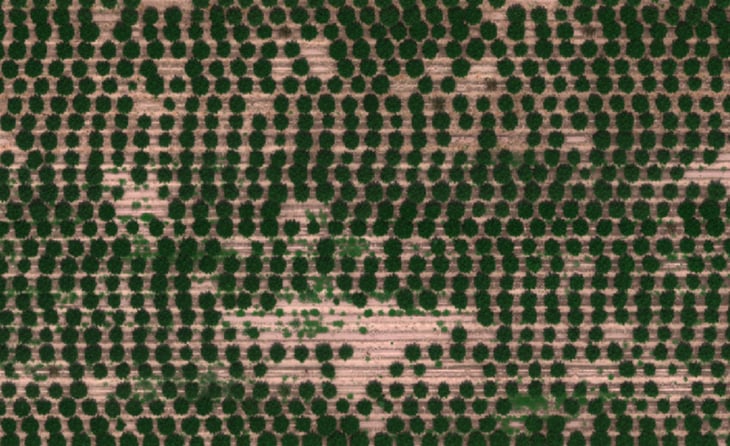
Plant Counting and Sizing
Users of PrecisionAnalytics Agriculture can apply the Plant Counting and Sizing tool over an area of interest to analyze crop emergence, segment crops by size, and track plant development throughout the emergence, vegetatitive and flowering growth stages. With this tool, a dot will appear over every hemp plant counted, resulting in a highly accurate count of the number of plants per acre. Each dot is colorized to indicate its size relative to the entire plant population. Users draw perimeters to isolate counts in a given area of the field, or establish zones to compare multiple parts of the field.
Missing plants could indicate there was a skip during transplanting or that something caused the plant to die after transplant. Thermal indices, which we discuss below, can help identify whether temperature and moisture levels are affecting plants. Additionally, farmers can get a precise count of plants, and quickly surface patterns of emergence in particular rows, zones, or custom plots. As a result, they can catch more replanting opportunities to maximize the yield potential of their field.
Farmers can use the sizing tool to monitor their plants’ maturity from the vegetative stage to the flowering stage. Once the plants reach sexual maturity, farmers must be vigilant about inspecting the fields for male plants to prevent pollination, and must pull them up when they find them. All it takes is a couple of male plants to pollinate an entire crop of hemp, enabling the female plant to produce seeds and reducing their CBD concentration. This could potentially destroy a CBD farmer’s profits. As plants will reach different sizes and stages of maturity at different times, having a birds-eye view by which to identify more verdant, faster-growing plants in a vast field enables farmers to closely monitor and respond to the potential for pollination.
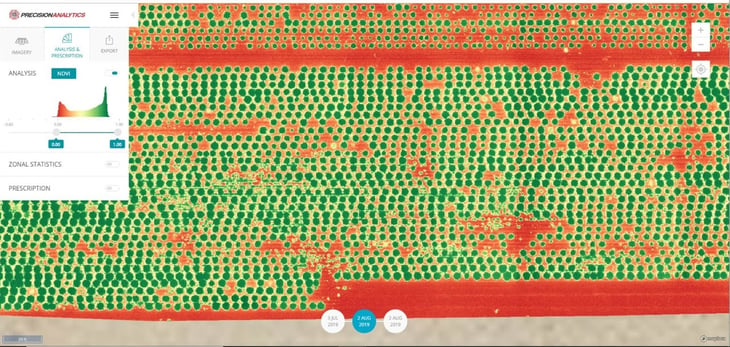
Vegetative Indices
As there is a significant correlation between soil moisture and the cannabinoid content of a hemp plant, farmers need constant information about the moisture levels in their soil in order to maximize CBD potential in their yield. When a plant is stressed, particularly from water deficiency, the temperature is going to be higher than when it’s well-watered. That makes thermal sensors and indices particularly useful for monitoring moisture levels. Farmers can thus identify areas that are too damp or too dry, and make more informed decisions about irrigation. Ultimately, optimizing soil moisture helps ensure that the plants’ cannabinoid content remains at maximum levels.
Disease is not uncommon in hemp plants. If using an RGB sensor to collect the data, users can then apply a vegetative index, such as VARI or GLI, and instantly see a green versus red overlay of their imagery. The green areas indicate the strongest vegetative vigor, with grades of orange, yellow, and red indicating diminishing vigor. These gradations can be adjusted to clarify hemp from grass and weeds, as well as plants that are healthy versus those that are not.
This enables farmers to detect early indicators of stress stemming from crop diseases, such as grey or yellow mold, powdery mildew, or dark and discolored watery lesions known as hemp canker, when there is still time to manage inputs or replant. Stressed plants identified by a vegetative index might also indicate issues with pressure from weeds. Once a user identifies where weeds are causing stress, they should pull them up or manually cultivate them. Unlike with crops like corn, once hemp starts to grow, there are few herbicides and pesticides labeled for hemp use. Moreover, the use of such chemicals could cause residue to build up in the CBD extract, which could result in the yield being rejected. Likewise, with vegetative indices, nutritional deficiencies can be identified early enough for the farmer to manage inputs or make a replant decision, without resorting to too many chemicals.
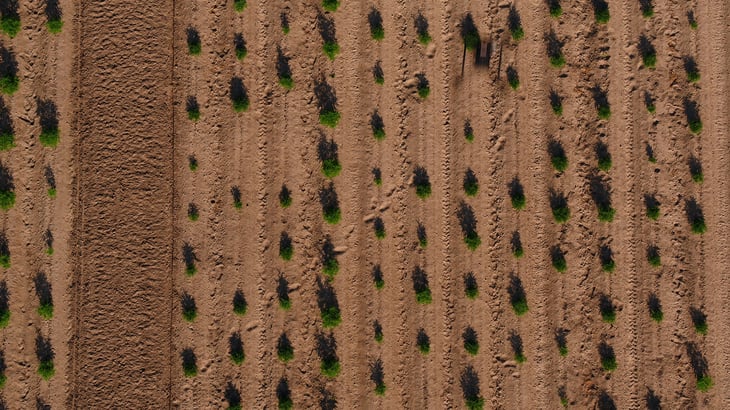
While ground-truthing is the best way to verify a diagnosis, applying a vegetiative index to a hemp field in PrecisionAnalytics Agriculture helps farmers focus on the areas requiring attention. They can then go directly to the source and further assess the cause of the issue on the ground.
Those farmers owning precision applicators can use PrecisionAnalytics Agriculture to translate vegetative indices into prescription maps for their hemp fields. The system automatically breaks up vegetative vigor into tiles as small as 9 square feet. This enables the user to dictate a pound-per-acre (lb/acre) application of fertilizer or other input. Then, the user can export a prescription file directly from PrecisionAnalytics Agriculture that is ready to be imported into a precision enabled sprayer or spreader.
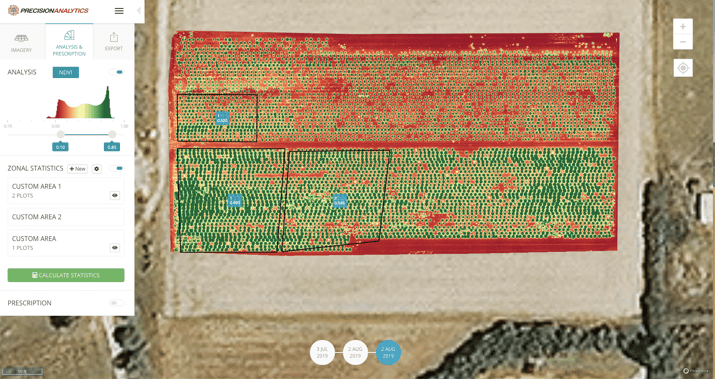
Custom Zones and Comparison View
Hemp farmers who are testing different varieties and production methods can use PrecisionAnalytics Agriculture’s zonal tools to build management zones within hemp fields. These zonal tools enable farmers to determine count and size, and specific areas of stress for that zone, and treat them separately. By building management zones, farmers can subdivide their field into smaller zones (for instance, a group of 10 rows, or 1000 acres), and number those zones.
The Comparison View in PrecisionAnalytics Agriculture enables farmers to see how successful they were in planting hemp, and help them make better production decisions about irrigation, disease management, and variety selection. From emergence to sexual maturity and beyond, users of the software can track how their management strategies impacted the trajectory of their hemp yield.
Reports
Users can also view and share live links and dynamic PDF reports that focus communication for a variety of stakeholders, whether they be agronomists, buyers, or farmhands. With a simple checkbox interface, users can select the layers of data they choose to share in the map interface. They can also zoom in on a specific area of interest and have all components of the report update to focus on just that area. Using these streamlined, interactive reports, stakeholders can easily examine all data trends for one zone of plants versus the field, and compare growth success.
Why PrecisionHawk?
The hemp growing season (from planting to harvest) is generally four-to-five-months. With an acre of hemp costing about $10,000, the relatively short lifespan of hemp plants, and the multitude of factors affecting CBD content, there’s only a brief window of opportunity to successfully produce hemp for CBD. At PrecisionHawk, we’ve optimized our cloud to turnaround high-resolution imagery and analytics in near real-time, and our robust yet flexible machine learning-based algorithms are designed for counting and sizing hemp plants.
With years of experience collecting data in the agriculture industry, using aerial mapping to scout crops, our data scientists and engineers have developed some of the best-trained machine learning models in the industry. That means our algorithms and indices, including our stand count tool, are better able to detect individual crops and deliver precise analytics about count, size, and health based on data across a wide variety of crops and soil types. Additionally, our years of working with leading agronomists have informed our intuitive framework, built for multi-farm and multi-field data management and sharing. As a result, farmers can learn how successful they were in planting hemp and producing CBD.
We’re here to help you adopt smarter and more efficient farming practices. Our agricultural experts will assist in evaluating when, where, and how to incorporate drone-based aerial intelligence into your operations. Our global network of drone operators is ready to execute flights on your behalf. And our engineers are continuously optimizing PrecisionAnalytics Agriculture to better automate and accelerate your analysis.
Contact us today for more information on how you can use drone-based aerial intelligence in your operations.
